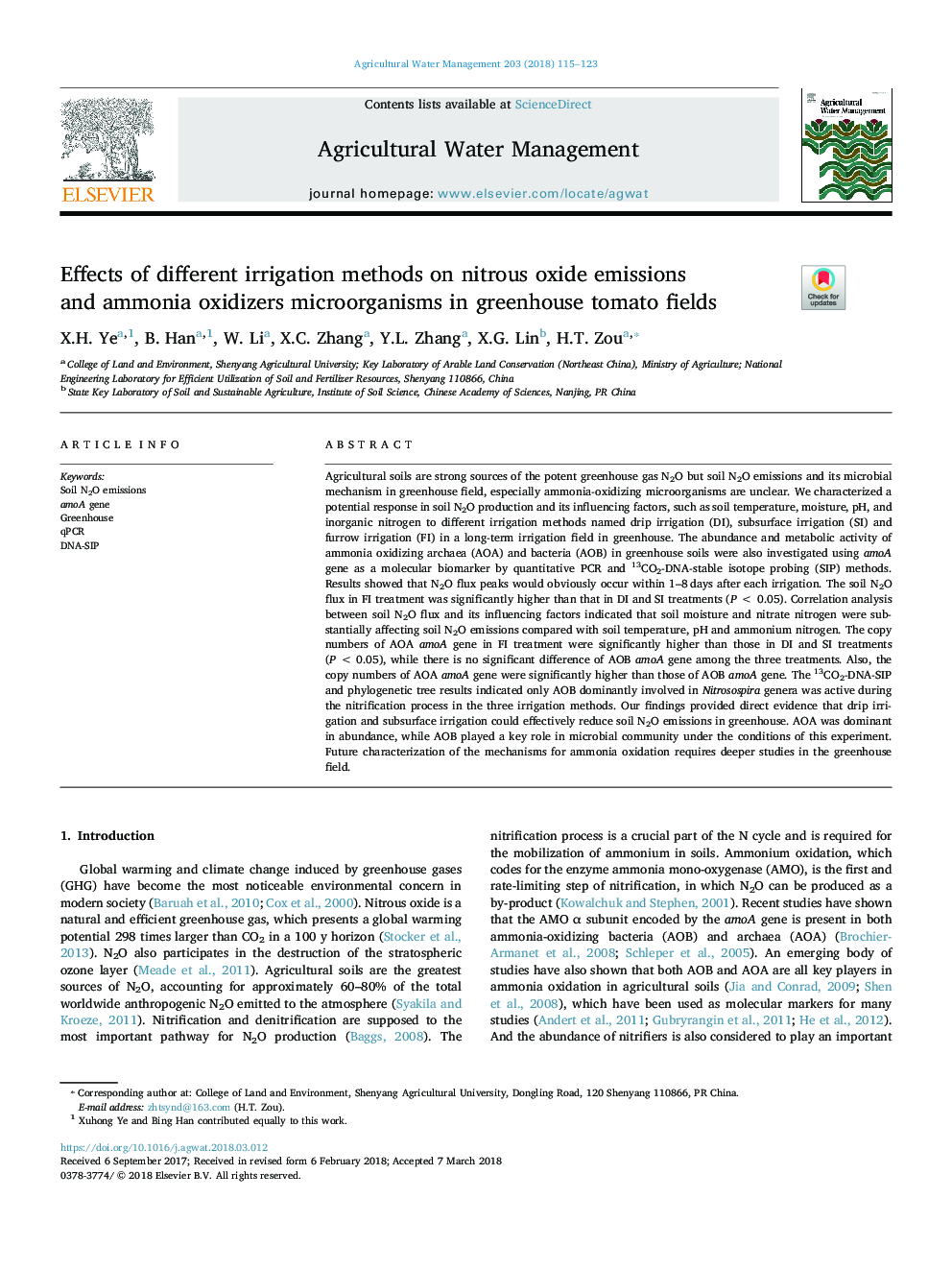| کد مقاله | کد نشریه | سال انتشار | مقاله انگلیسی | نسخه تمام متن |
|---|---|---|---|---|
| 8872934 | 1622877 | 2018 | 9 صفحه PDF | دانلود رایگان |
عنوان انگلیسی مقاله ISI
Effects of different irrigation methods on nitrous oxide emissions and ammonia oxidizers microorganisms in greenhouse tomato fields
ترجمه فارسی عنوان
اثر روش های مختلف آبیاری بر انتشار های اکسید نیتروژن و میکروارگانیسم های اکسید کننده آمونیاک در حوزه های گوجه فرنگی گلخانه ای
دانلود مقاله + سفارش ترجمه
دانلود مقاله ISI انگلیسی
رایگان برای ایرانیان
موضوعات مرتبط
علوم زیستی و بیوفناوری
علوم کشاورزی و بیولوژیک
علوم زراعت و اصلاح نباتات
چکیده انگلیسی
Agricultural soils are strong sources of the potent greenhouse gas N2O but soil N2O emissions and its microbial mechanism in greenhouse field, especially ammonia-oxidizing microorganisms are unclear. We characterized a potential response in soil N2O production and its influencing factors, such as soil temperature, moisture, pH, and inorganic nitrogen to different irrigation methods named drip irrigation (DI), subsurface irrigation (SI) and furrow irrigation (FI) in a long-term irrigation field in greenhouse. The abundance and metabolic activity of ammonia oxidizing archaea (AOA) and bacteria (AOB) in greenhouse soils were also investigated using amoA gene as a molecular biomarker by quantitative PCR and 13CO2-DNA-stable isotope probing (SIP) methods. Results showed that N2O flux peaks would obviously occur within 1-8â¯days after each irrigation. The soil N2O flux in FI treatment was significantly higher than that in DI and SI treatments (Pâ¯<â¯0.05). Correlation analysis between soil N2O flux and its influencing factors indicated that soil moisture and nitrate nitrogen were substantially affecting soil N2O emissions compared with soil temperature, pH and ammonium nitrogen. The copy numbers of AOA amoA gene in FI treatment were significantly higher than those in DI and SI treatments (Pâ¯<â¯0.05), while there is no significant difference of AOB amoA gene among the three treatments. Also, the copy numbers of AOA amoA gene were significantly higher than those of AOB amoA gene. The 13CO2-DNA-SIP and phylogenetic tree results indicated only AOB dominantly involved in Nitrosospira genera was active during the nitrification process in the three irrigation methods. Our findings provided direct evidence that drip irrigation and subsurface irrigation could effectively reduce soil N2O emissions in greenhouse. AOA was dominant in abundance, while AOB played a key role in microbial community under the conditions of this experiment. Future characterization of the mechanisms for ammonia oxidation requires deeper studies in the greenhouse field.
ناشر
Database: Elsevier - ScienceDirect (ساینس دایرکت)
Journal: Agricultural Water Management - Volume 203, 30 April 2018, Pages 115-123
Journal: Agricultural Water Management - Volume 203, 30 April 2018, Pages 115-123
نویسندگان
X.H. Ye, B. Han, W. Li, X.C. Zhang, Y.L. Zhang, X.G. Lin, H.T. Zou,
